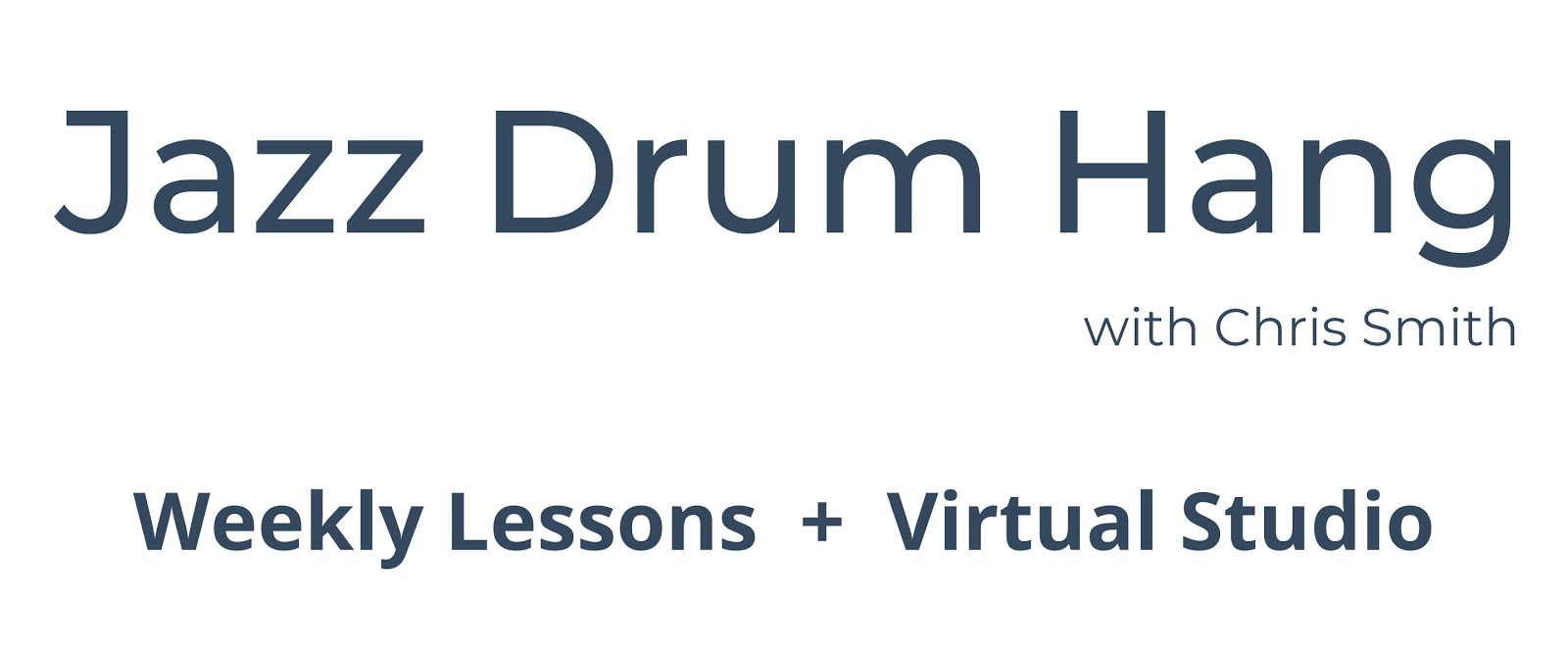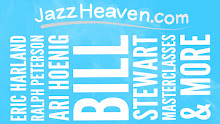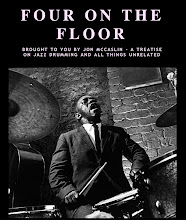Last week at the PASIC 2010 conference, drummer Jeff Hamilton performed with his trio and gave a very insightful masterclass on the art of Jazz drumming. Hamilton clearly pointed out that the largest drum in the drum set is called a BASS drum and not a KICK drum (!) Big difference... : ) Hamilton also spoke about the importance of being able to "feather" the bass drum on all four beats while playing swing in 4/4 time (ie. playing a steady 4/4 pulse so it's felt rather than heard).
Now the issue of feathering the bass drum in the context of contemporary Jazz drumming is a fairly controversial one. Some drummers do it all the time, some drummers never do it and some drummers (and I include myself in this category) do it as the musical situation and context dictates. My personal opinion (and this is based on watching the masters play) is that while you might not always feather the bass drum while playing time, one certainly must be able to know how and have that as an available part of your vocabulary. And it's not easy either....which is probably why a lot of drummers refuse to acknowledge its fundamental role in Jazz timekeeping. I've seen a good number of the heavyweights play over the years and they ALL do it in some form or another at some point in their playing. Therefore, so should we all : )
But this blog post isn't about debating the validity of feathering the bass drum (as far as I'm concerned, there is NO real argument if it's done correctly) Someone asked Jeff Hamilton during his masterclass if he feathers the bass drum during fast, up tempos. Jeff acknowledged that when the tempo gets really quick (and I'm assuming when Jeff Hamilton means fast, he really means upwards of Warp 9 for the rest of us - ie. REALLY fast!) that he will switch to playing only beats 1 & 3 on the bass drum (quietly, of course) and with the hihat on 2 & 4. This got me thinking...
Years ago I heard Max Roach play and, indeed, when he was playing one of his signature break neck tempos beats 1 & 3 were clearly audible from his bass drum. I had actually forgotten about that (!)
Also, when I first moved to Toronto in the fall of 2007, drummer Joel Haynes and I were hanging out one night at the Rex checking out drummer Bob McLaren playing with tenor saxophonists Pat LaBarbera and Kirk MacDonald on their annual John Coltrane Tribute. Joel tapped me on the shoulder and motioned me to check out McLaren's bass drum. Sure enough, he too was playing (feathering) the bass drum on beats 1 & 3 while bassist Neil Swainson was playing in 4 EXCEPT they were playing some medium tempo Coltrane tune and NOT an up tempo flagwaver(!) And did it swing ? Of course it did !
So later when I studied with Bob I asked him about that. He told me that he got that idea from his days studying with Claude Ranger and it was his opinion that this two beat bass drum pattern with the hihat on 2 & 4 was really the "true" 4/4 by virtue that it split that basic pulse between two limbs and both sides of the body evenly.
Makes sense to me and I think there's a lot to be said for that idea of balance. But how do you make what's traditionally a "two beat" pattern feel like a 4/4 pattern? It's tricky and can be done. I think it's really about dynamics and playing the bass drum quiet enough that it doesn't over accentuate a half-time feel, balancing the volume of the bass drum with the hihat and really emphasizing the pulse of the ride cymbal. However, if you toy around with this for long enough you'll notice that the rhythm of this beat still has a different horizontal feeling to it than if you were to play four beats to the bar on the bass drum.
What I did was to go back and practice my Ted Reed Syncopation variations over this bass drum/hihat pattern and strive to make it feel like 4/4 rather than a two feel. It is a bit tricky but a unique feel once you get it.
Is anybody aware of any other drummers that do this?
So there you go. Now go forth and work your rhythmic magic and make 2 feel like 4 : )
Friday, November 19, 2010
Subscribe to:
Post Comments (Atom)


















Every time I practice "Cherokee" I just hit the one and three on the BD.
ReplyDeleteWhen I studied with Vernel Fournier in the early '90s he taught this approach to the bass drum as well, although more for fast tempos.
ReplyDeleteCheck out master Brian Blade on a drum track from a Darrell Grant record... quite a bit of feathering!
ReplyDeletehttp://www.darrellgrant.com/downloads/music/brian_blade/Tight_Drums_Only.mp3
Richie
Thank you!
ReplyDeleteI was lucky enough to study with Vernel Fournier. He would pay this way on every tune for a least a few choruses until it was really locked in. Then 'ge& would sometimes switch to 4 on the BD + 2&4 on HH, or else keep it the same throughout.
ReplyDeleteGreat post, Jon. The famed NYC teacher Stanley Spector taught students to practice up-tempos by playing lightly on 2 & 4, though I'm not sure that he used the term "fearthering," advising students rather to just play it soft and "human."
ReplyDeleteDid you study with Stanley Spector?
ReplyDeleteI took his home-study course in the early 1970s, pretty much all of it. Whatever success I had subsequently as a player was the result primarily of his methods. His approach was modeled on simplicity and common sense, and he emphasized swing, musicality, and feel. I know that sounds a bit vague, but he somehow managed to isolate those elements of jazz drumming in his teaching.
DeleteCan you please email me at fouronthefloorblog@gmail.com? I'd like to know more about Stanley's teaching methods. I spent some time with Terry Clarke when I lived in Toronto and his teacher, Jim Blackley, was also a student of Stanley's back in the day. Terry and I don't know much about his method and there appears to be some "mystery" surrounding his teachings. I would be curious to know more about what and how he taught. Whatever you could share with me would be greatly appreciated! Do you still have any of his materials he sent you? Thanks!
ReplyDeleteMax Roach often plays feathering bass drum. For exemple, on Jordu with clifford Brown
ReplyDeleteAll your Peter Erskine lesson videos disappeared.
ReplyDeleteI would of liked to see them.
Sorry. I have no control over what people remove on YouTube!
Delete